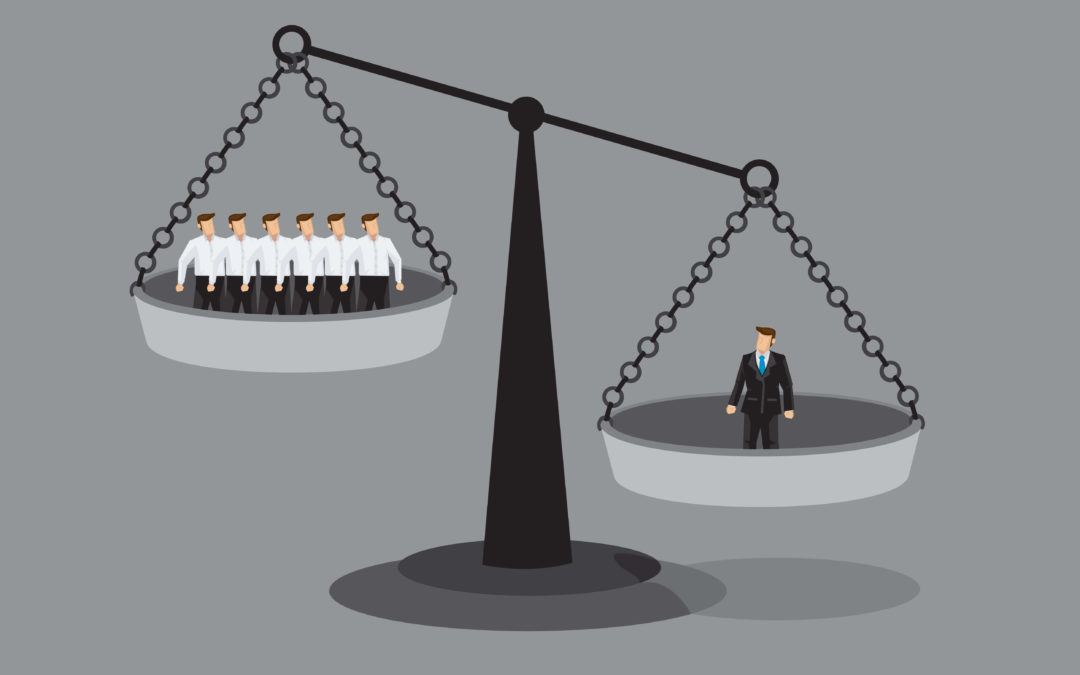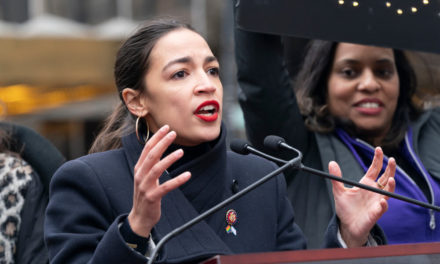The U.S. economy’s strength the past year has created millions of new jobs and pushed up wages for many Americans, helping a number of S&P 500 company CEOs secure yet even more raises, pushing their median income above a staggering $1 million per month.
According to a recent Wall Street Journal article, median compensation for the 132 CEOs of S&P 500 companies rose to $12.4 million in 2018, up from $11.7 million in 2017.
Robust corporate profits on the backs of the Tax Cuts and Jobs Act’s slashing of the corporate tax rate helped propel the CEO salaries further upward. Though, about one-third of the CEOs saw their pay go down.
Most of these CEOs received substantial raises—the median was 6.4%—even though the December stock-market swoon meant most of the companies finished out the year posting sluggish shareholder returns.
The strong economy, coupled with concern that a slowdown could be lurking in the wings, likely emboldened many boards to boost pay in 2018, said Robin Ferracone, founder of Farient Advisors, an executive-pay consulting firm.
“Markets did pretty well, companies did well, and the economy held up,” Ms. Ferracone said. “My sense is that they know right now it’s good, they can justify it with pay for performance, and they know they’re going to have to bring it down when the bloom’s off the rose.”
If the pay trends continue for the rest of the companies in the S&P 500 index, 2018 could mark a third straight year for record CEO pay—and one of the starkest examples in years of shareholder performance trailing CEO pay. Investors in the previous two years enjoyed strong returns.
In 2017, the median pay for all CEOs in the S&P 500 at the time was $12.1 million. The Journal’s analysis uses total compensation, including salary, bonus and stock awards as they are valued in securities filings.
Wages have risen for ordinary workers, too, though not so rapidly. Average hourly earnings for nonsupervisory workers were up 3.5% in February from a year earlier, but employers added far fewer jobs than expected, according to the latest government data. (Hundreds of U.S. companies now also disclose median pay for their workers; see how your salary compares among more than 1,000 companies.)
Walt Disney Co. paid its longtime leader, Robert Iger, about $66 million last year, making him the highest-paid CEO among the initial list of companies disclosing pay. His compensation rose 80% from $36 million in 2017. Disney in recent months has twice reduced Mr. Iger’s future pay, some of which was tied to the acquisition of major assets of 21st Century Fox Inc. and a contract extension.
Financial-services firm Jefferies Financial Group Inc. reported total compensation of $44.7 million for Chief Executive Richard Handler, more than double what he received a year earlier. Hologic Inc., a medical-equipment maker, paid its chief, Stephen MacMillan, $42 million, nearly quadruple what he made the previous year.
These big payouts accompanied mostly robust stock-market returns: 20% total return during Disney’s fiscal year that ended in late September, and 12% at Hologic. Jefferies had a negative 15% return.
More broadly, stock performance for the larger group lagged in 2018. The median shareholder return among the 132 CEOs was 2.9%, while one-third posted returns of negative 10% or worse. Median shareholder return in 2017 for the same group was 21%, and 16% the year earlier. Total return reflects changes in a company’s share price and dividend payments.
A Disney spokesman said the company posted strong financial results in 2018 and over the past decade. He said Mr. Iger’s pay was almost entirely tied to performance and rose primarily because of a special equity grant linked to a contract extension he received in December 2017.
Jefferies said in its proxy filing that Mr. Handler’s pay figure consisted of $18.7 million for 2018, with the remaining $26 million of stock awards only available to him in future years if performance measures are achieved. The company said it didn’t intend to make additional equity awards in 2019 and 2020.
A spokesman for Hologic said the company’s board gave Mr. MacMillan a special $30 million equity award, which vests over three to four years, after he received a job offer from a larger competitor.
Some large pay packages fell outside the Journal’s analysis, often because the companies weren’t in the S&P 500. Nikesh Arora, a former Google and SoftBank executive who took over as CEO of cybersecurity company Palo Alto Networks Inc. in June 2018, received $125 million.
Nearly all of Mr. Arora’s compensation was in restricted stock and stock options vesting over as much as seven years under various conditions. A Palo Alto spokeswoman said some of Mr. Arora’s stock awards are tied to his own investments in the company’s stock.
Not all CEOs got a raise. Pay fell for 47, or about a third, of the CEOs and by more than 10% for 22 of them. Hock Tan, head of chip maker Broadcom Inc. and one of the top earners in 2017, saw his 2018 pay plunge to $5 million from $103 million in 2017, which included one-time equity awards that vest over four years. Broadcom posted total shareholder return of negative 12.9% for the fiscal year that ended Nov. 4.




